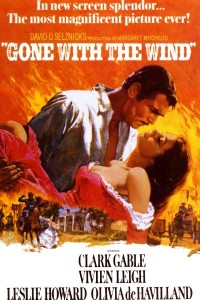A guest post by Daniel Braithwaite.
 According to Plato we have the idea of the thing, or the form. Everything we see around us is just representations of those ideas. To take it one step further the poet (writer or author) makes a representation of a representation. The author is therefore creating something that is twice removed. A lie about a lie.
According to Plato we have the idea of the thing, or the form. Everything we see around us is just representations of those ideas. To take it one step further the poet (writer or author) makes a representation of a representation. The author is therefore creating something that is twice removed. A lie about a lie.
As an author, if we are going to lie, then we had better make it a good one. In science fiction and fantasy every story is a “lie.” Readers want to immerse themselves in the story. They want to forget the “truth” and believe the “lie,” even if it is only for a little while. But what makes a story believable, what makes a good story? Good characters drive good stories.
How many times have you been walking around when something hits you and you’re like, “Wow, that would be a great story”? So, you run home with your wonderful idea for a story, “Everyone is going to love this. I’m going to destroy the world and then . . . I’ll bring it back—with a time machine!” So, armed with your idea you start to write. You need someone to be the awesome hero, but who do you cast? Who can carry this amazing plot?
After thinking about it for a few days you decided to cast a reluctant hero, an everyman (or everywoman) and you get to writing. You have your character wake up, and what is the first thing he or she does? Well, get ready for the day, duh! So your character walks to the mirror and looks in, because that’s what everyone does first thing in the morning. (We never just throw clothes on and run out the door.) Alright, you have described your character, and by so doing you have achieved the ultimate Zen experience of storytelling: characterization. You smile and say to yourself, “This character has to be good, I mean, the reader know what she looks like!”
Right? Wrong. Turns out your character is just your cousin Bob . . . with boobs. And she isn’t even as interesting as Bob (he picks his nose and then feeds it to the dog). But how do you fix this? How do you save your hero from mediocrity? You’ve read up on your books: you’ve followed Frodo out of the Shire, Rand away from the farm, and Vin out of the city. You know a good character when you read one.
Out of the many tactics writer use to breathe life into their characters, I recommend using the character sheet (also called a character profile or character sketch). This type of planning may be difficult at the beginning, but will yield dividends with practice.
Before we dig into you character, lets dig into you. Are you just your outward appearance? No? I didn’t think so. Maybe you cringe when you come up to a blind turn, is that because you were in an accident as a child? Or perhaps you love to visit historical monuments, does that go back to your dad reading stories about cultural myths? Everyone internalizes their experiences in a myriad of ways, and that internalization plays a role in who they are.
Now, let’s look at our character sheets. I like to start with a name and outward appearance. It makes it easier for me to think about a person if I can see him or her in my mind. This is the quick part. Meet Annie. She is 5’9”, has shoulder length dusty blond hair, has a slight pigeon toe on her left foot, has hazel eyes, and is plump (but not fat). Do you see her? Is she introverted? Yep, else she wouldn’t be our reluctant hero. Why is she an introvert? Maybe she had a traumatic experience as a child playing in the neighborhood. A boy pulled down her pants on the playground. That, coupled with her closest friends laughing at her favorite underwear, sealed the deal. Great, what next? Her pigeon toe, you see she got it when she was twelve. She was on the monkey bars alone when she slipped and broke her leg. It didn’t heal perfectly and now she has a pigeon toe. Do the same thing for politics, religion, pet peeves . . . we can keep going, but I think you get the idea.
You keep asking questions and answering them until you feel you know your character. Now you know how she will react when the dying spy approaches her with the stolen plans to a time machine. You can weave the cool details you came up with into the story: a hint here, a line there, and eventually you have excellent characterization.
Do you have to do this with every character? In my opinion, you don’t need to go through this process for everyone; but at least your vital characters. Their supporting staff should have a few lines about them as well. (Uncle Tim talks with a fake Scottish accent because he wants to be “authentic” at his SCA events.) A little planning goes a long way. We’ve all heard that you should write what you know. Well, sit down and get to know your cast. Ask them deep questions and you will get deep answers. (And when your friends see you talking to yourself they will get deep concerns about your sanity.)
You have your idea, you have your character, and now you are ready to weave your tale. Practice on a few characters. If you ever get stumped, go back to one of your favorite books and ask those characters the same questions. Could you answer them? How did you know the answers? It’s not because you were told all at once. Before too long you will start to notice how their lives are woven into the action, dialogue, and plot. Ready to give it a try? Well, then get going, you have a lie to tell.
Guest Writer Bio:
Daniel Braithwaite is a Senior Editor at the science fiction and fantasy magazine
Leading Edge (
www.leadingedgemagazine.com). When he is not reading slush or interviewing authors he is working on his writing (if he isn’t battling off a horde of children and kittens). He is also currently studying writing under Brandon Sanderson at Brigham Young University. He is always happy to answer questions about the magazine (and the mysteries of the universe). You can reach him at
nonfiction@leadingedgemagazine.com.
 I remember watching Gone with the Wind when I was about five or six. My mother is a sucker for the classics. The plot and story were a bit over my head, but I remember getting the gist of what was happening by pestering my mom. I gathered that Scarlet O’hara was in love with Ashley, but for some reason the two didn’t run off together and live happily ever after like the other shows I’d watch. In the Disney movies, there seemed to be a clear connection between the love interests and then the evil villain did everything he/she could to keep the two from being happy forever.
I remember watching Gone with the Wind when I was about five or six. My mother is a sucker for the classics. The plot and story were a bit over my head, but I remember getting the gist of what was happening by pestering my mom. I gathered that Scarlet O’hara was in love with Ashley, but for some reason the two didn’t run off together and live happily ever after like the other shows I’d watch. In the Disney movies, there seemed to be a clear connection between the love interests and then the evil villain did everything he/she could to keep the two from being happy forever.
